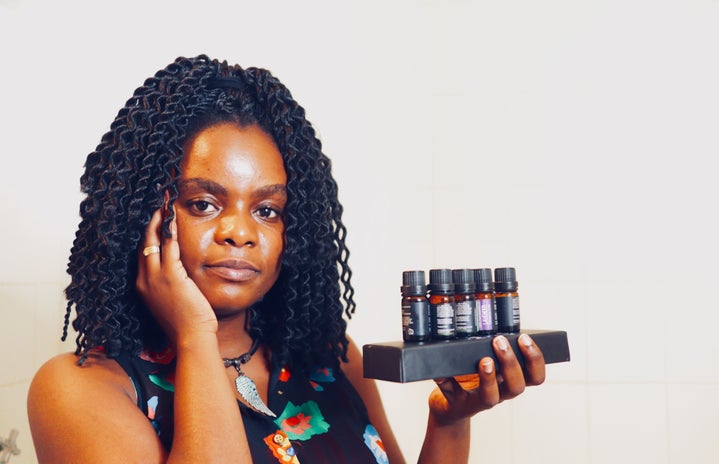Another Diaspora War is brewing as a new baby hair trend has taken social media by storm. While the conversation surrounding the trend seems to be lighthearted and creative, it is also necessary to acknowledge its roots in texturism.
Since the beginning of time, protective styles have been a staple for Black people. From knotless braids to cornrows to wigs, the possibilities are endless when it comes to Black hair. Recently, a new trend has surfaced in which people are adding long, dramatic baby hair to their styles. Though baby hair is by no means a new style, the way it is ‘laid’ has changed significantly in the last few months. Tutorials on Instagram, TikTok, and YouTube alike show Black people of all hair types straightening their baby hair to achieve a softer appearance. When the look is finished, the straightened swoops and swirls end up laying like that of a looser curl pattern.
Journalists have defined texturism as “the idea that certain types of natural hair patterns are more beautiful than others” (Simeon, 2018). Further, what makes one texture more ‘beautiful’ or ‘desirable’ is, historically, determined by proximity to whiteness. Texturism dates back to the nineteenth century when black people began finding ways to ‘tone down’ their black features (Jahangir, 2015). Assimilating with Eurocentric beauty standards, those with the shiniest, pressed hair tried their best to appear as least ‘savage’ as possible. Chemically treated and heat-trained hair became a symbol of status within the Black community, and soon, those with kinkier hair were considered less beautiful than their loose-curled counterparts. This anti-Black ideology was passed down through numerous generations in the diaspora, so much so that it became the norm to press your hair if you needed to look ‘polished’ or feel ‘pretty.’ Simultaneously, certain rhetoric emerged in Black vernacular. Kinkier coils became ‘nappy,’ while looser curls became known as “good hair.” The rise of the Black Power movement in the late twentieth century gave way to today’s Natural Hair Movement as an increasing number of Black folks began to deconstruct the “Eurocentric mold of beauty” (Nasheed, 2019). Today, natural hair is the norm as Black people around the world are embracing their blackness.
Nonetheless, texturism has a deep history in the Black community. For this reason, some may argue that it is quite dangerous to blindly follow trends that perpetuate it. Mainstream media puts enough pressure on Black youth to look, talk, and behave a certain way. Teaching young people that they now have to make their curls look looser and softer is indirectly displaying that this look is more desirable than kinkier textures. Others may argue that this new trend is simply a form of self-expression and creativity. After all, the way baby hairs are laid does show character. They can tell a story. Whether you are for or against straightened baby hair, this debate reinforces that Black youth should continue to investigate and dismantle trends before participating in them.


